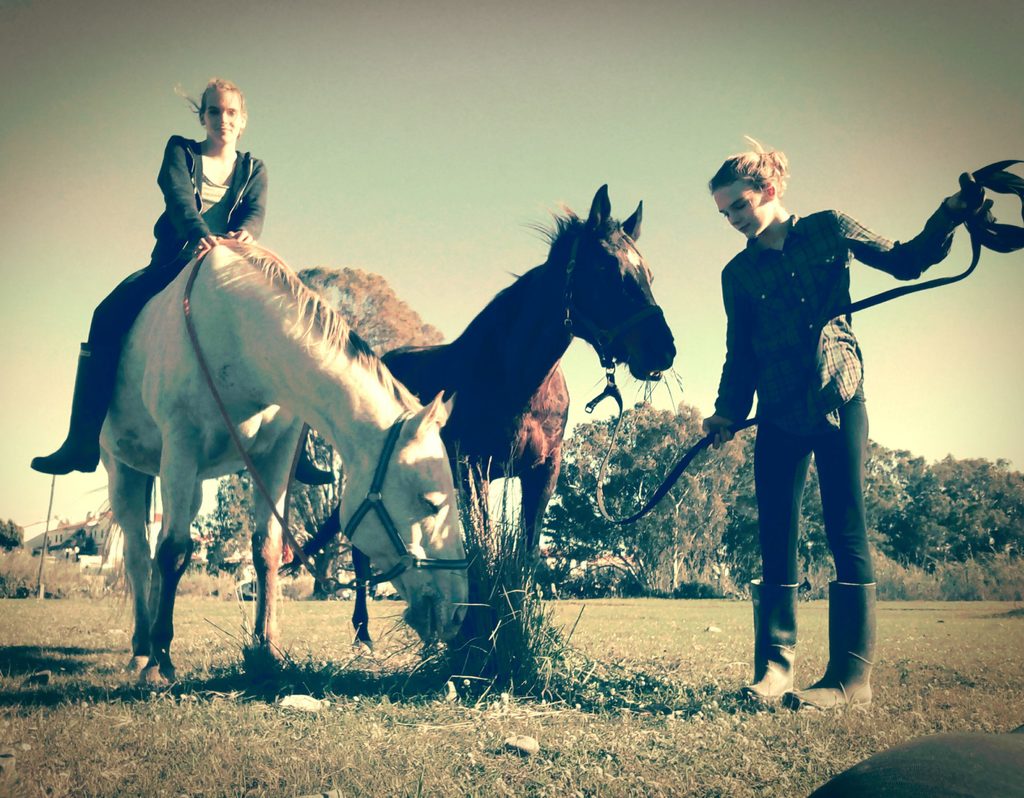
What is Self Directed Learning?

Right now one daughter is the computer, on the Khan Academy, my other daughter is cooking, my son is on a new scooter that was kindly donated to him by another very generous worldschooler. The kids choose their activities, we flit in and out trying to assist where we can but mostly we step out of the way. That to me has been one of the hardest parts, the stepping away bit, which we talk about a lot in our book.
Here are some self directed things that they are in to right now
looking after the horses in the place where we are staying right now
gaming
reading
making
learning languages (German and Spanish)
cooking
singing
circus silks
the list goes on and on and on because life is full of opportunity and everything is a potentially new learning moment. Nobody is testing them or assessing them or telling them what and how to learn. They are self directed learners. Here is an excerpt from ‘Jump, Fall, Fly’ our book that talks more about it.
Self directed learning
- self-directed
- adj
- (of study, learning, etc) regulated or conducted by oneself
Simple definition with huge consequences. Common beliefs about children is that given half a chance they won’t want to learn anything. By now we have busted this myth (I hope). Children love to learn when they are curious, interested, having fun and feeling good. Can they develop the grit and focus to delve into a learning moment even when it requires concentration and commitment? Yes of course they can especially if they are supported by adults around them and especially if they see it modeled to them by those adults. Another way of looking at this ability to focus and commit to something is to understand the importance of the experience of flow which has been mentioned in this book several times. The flow state reduces learning stress which in turn increases engagement.
What is the parents part and contribution to the self-directed learning approach? In short we facilitate, provide support, assist with accessing books, websites, pictures or whatever is required. We talk to the children about what they are learning about with an emphasis on what they are enjoying about what they are doing. We look for what they are benefiting from and self-manage ourselves to not focus at what they have not yet learned. Glass half full is a good approach.
We also do what we can to bring into the environment at home books or objects that may provoke curiosity. See the ‘strewing’ example below.
What is self-directed learning in action?
Lehla
It is the going with what arises. Saying ‘yes’ a lot. Ok, admittedly if a child wants to build a rocket and fly it to the moon it may be tricky but still there is surely something you can do with that. Or a child wants to set a tree on fire to see what happens, you may have to work around that in a creative way too. But to me it is going with what is in the moment. I find that I have had to learn how to let them learn, that sounds strange but I am so conditioned really, so I have had to learn to unlearn. Like the other day when one of them wanted to fry an ice cube in oil, I immediately wanted to say ‘no, that won’t work, that is crazy’ but I try nowadays to say ‘yes’ to things. I think self-directed learning from a parent’s perspective is saying yes to things as much and as safely as possible and from a kids perspective it really is just living, playing and learning, which they do without thinking much about it. I guess my job is to keep them safe within all that and to keep myself sane in the process.
This is an excerpt from ‘Jump, Fall Fly’ an e book, available to buy here
A little aside about the white horse in the picture. The girls have learnt that they have to communicate with her really really well. She is blind, so as they are German horses they have to be spoken to in German. As she leads her to the field nearby she watches her feet to see that she doesn’t trip on the stony Spanish path. As she says ‘Achtung’ the horse gently lifts up her feet up quite high. This is learning, a language between a thirteen year old girl and a horse in which they have both learnt to listen to each other. You could say that this is something that goes beyond a classroom and possibly deep in to her memories. Her future adult self may one day look back and remember the time when she as a child lead the blind horse to the nearby field…
Session expired
Please log in again. The login page will open in a new tab. After logging in you can close it and return to this page.
